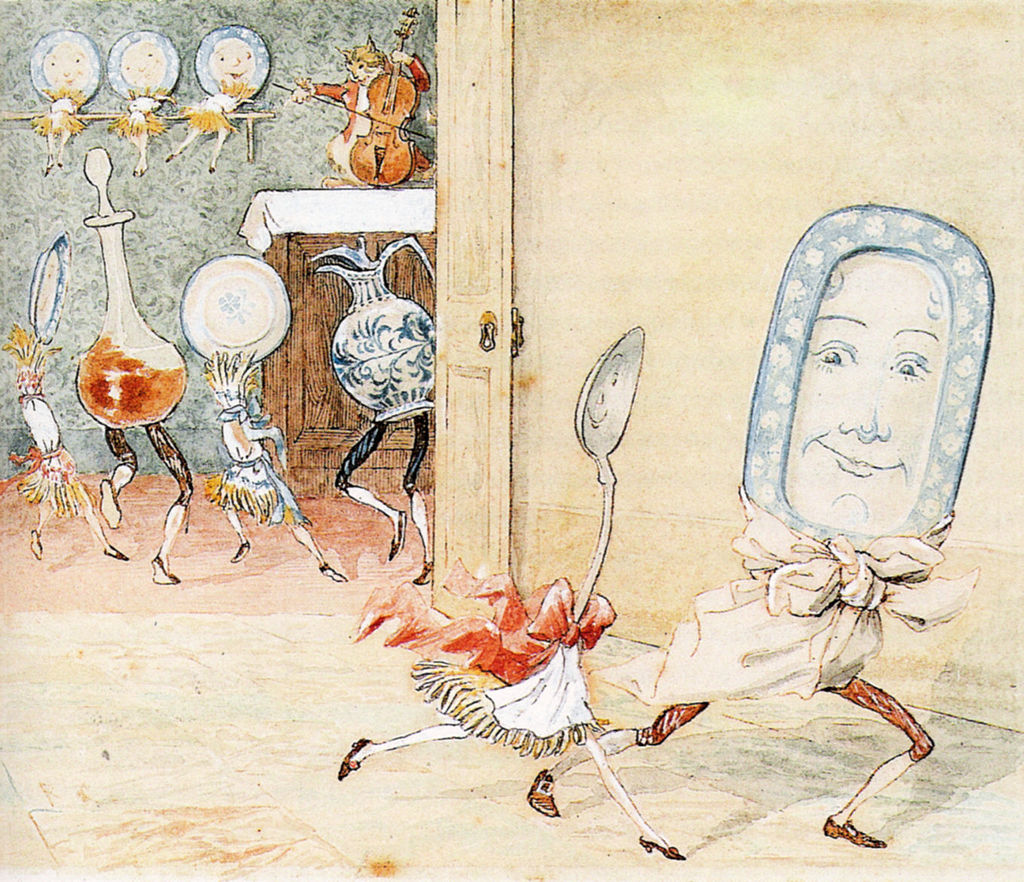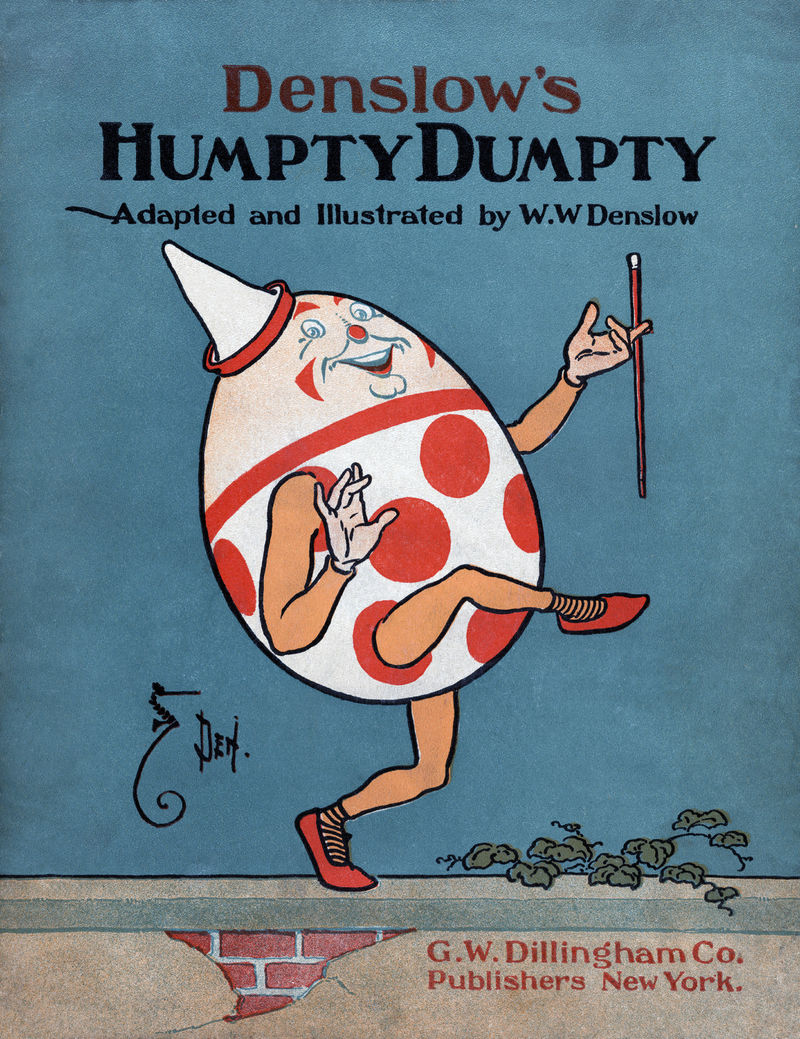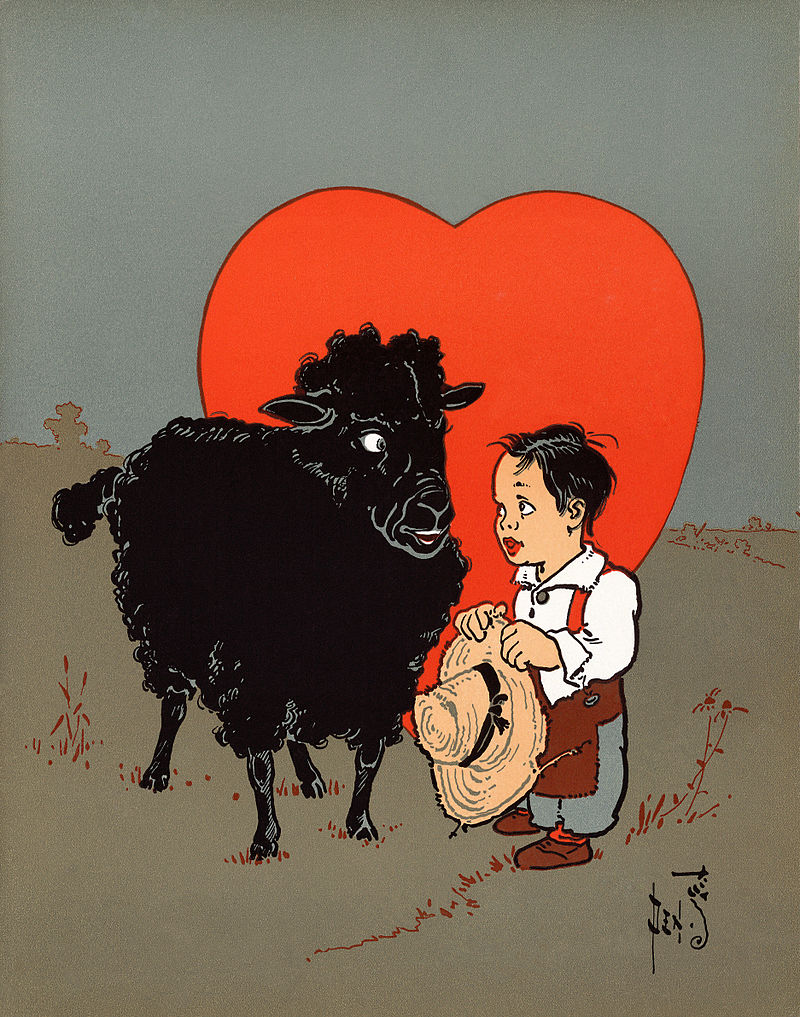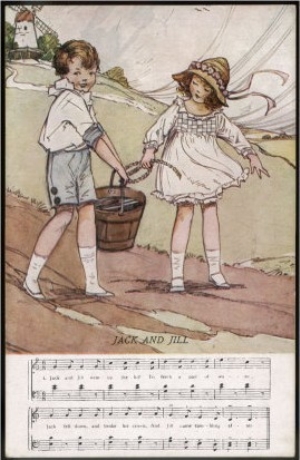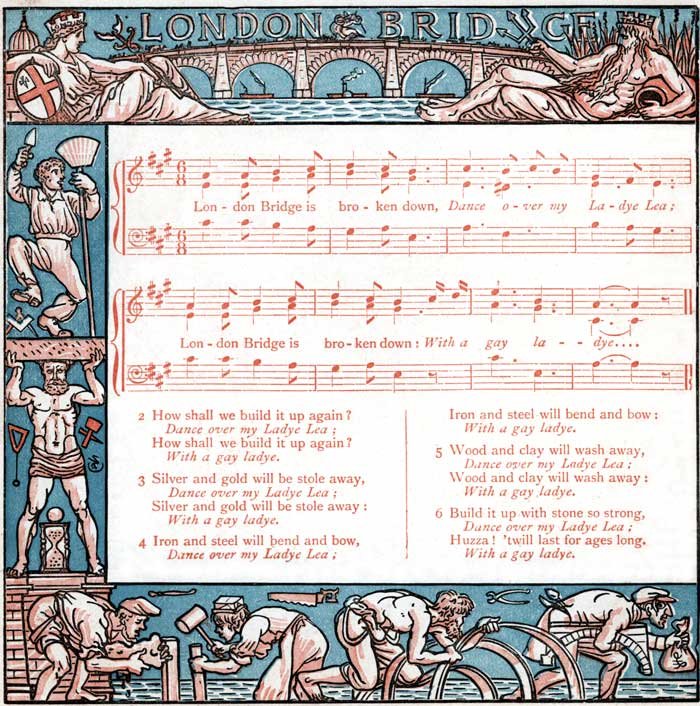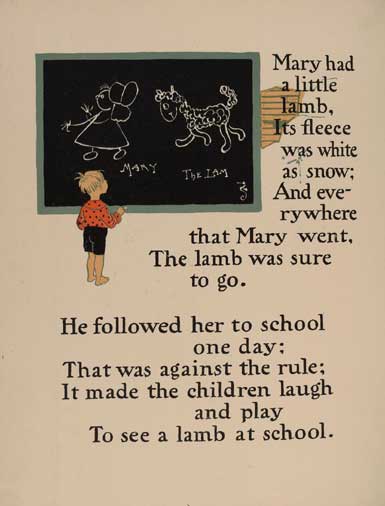Nursery Rhyme
A nursery rhyme is a traditional poem or song for young children in Britain and many other countries, but usage only dates from the late 18th /early 19th century. In North America the term Mother Goose Rhymes, introduced in the mid-18th century, is still often used.
History
Lullabies
The oldest children's songs of which we have records are lullabies, intended to help a child sleep. Lullabies can be found in every human culture. The English term lullaby is thought to come from "lu, lu" or "la la" sounds made by mothers or nurses to calm children, and "by by" or "bye bye", either another lulling sound or a term for good night. Until the modern era lullabies were usually only recorded incidentally in written sources. The Roman nurses' lullaby, "Lalla, Lalla, Lalla, aut dormi, aut lacta", is recorded in a scholium on Persius and may be the oldest to survive.
Many medieval English verses associated with the birth of Jesus take the form of a lullaby, including "Lullay, my liking, my dere son, my sweting" and may be versions of contemporary lullabies. However, most of those used today date from the 17th century. For example, a well known lullaby such as "Rock-a-bye, baby on a tree top", cannot be found in records until the late-18th century when it was printed by John Newbery (c. 1765).
Early nursery rhymes
A French poem, similar to "Thirty days hath September", numbering the days of the month, was recorded in the 13th century. From the later Middle Ages there are records of short children's rhyming songs, often as marginalia. From the mid-16th century they begin to be recorded in English plays. Most nursery rhymes were not written down until the 18th century, when the publishing of children's books began to move from polemic and education towards entertainment, but there is evidence for many rhymes existing before this, including "To market, to market" and "Cock a doodle doo", which date from at least the late 16th century.
The first English collections, Tommy Thumb's Song Book and a sequel, Tommy Thumb's Pretty Song Book, are both thought to have been published before 1744, with such songs becoming known as 'Tommy Thumb's songs'. The publication of John Newbery's compilation of English rhymes, Mother Goose's Melody, or, Sonnets for the Cradle (London, c. 1765), is the first record we have of many classic rhymes, still in use today. These rhymes seem to have come from a variety of sources, including traditional riddles, proverbs, ballads, lines of Mummers' plays, drinking songs, historical events, and, it has been suggested, ancient pagan rituals. About half of the currently recognised "traditional" English rhymes were known by the mid-18th century.
19th century
In the early 19th century printed collections of rhymes began to spread to other countries, including Robert Chambers's Popular Rhymes of Scotland (1826) and in the United States, Mother Goose's Melodies (1833). From this period we sometimes know the origins and authors of rhymes—for instance, in "Twinkle Twinkle Little Star" which combines the melody of an 18th-century French tune "Ah vous dirai-je, Maman" with a 19th-century English poem by Jane Taylor entitled "The Star" used as lyrics.
Early folk song collectors also often collected (what are now known as) nursery rhymes, including in Scotland Sir Walter Scott and in Germany Clemens Brentano and Achim von Arnim in Des Knaben Wunderhorn (1806–1808). The first, and possibly the most important academic collection to focus in this area was James Orchard Halliwell's, The Nursery Rhymes of England (1842) and Popular Rhymes and Tales in 1849, in which he divided rhymes into antiquities (historical), fireside stories, game-rhymes, alphabet-rhymes, riddles, nature-rhymes, places and families, proverbs, superstitions, customs, and nursery songs (lullabies). By the time of Sabine Baring-Gould's A Book of Nursery Songs (1895), folklore was an academic study, full of comments and foot-notes. A professional anthropologist, Andrew Lang (1844–1912) produced The Nursery Rhyme Book in 1897. The early years of the 20th century are notable for the illustrations to children's books including Caldecott's Hey Diddle Diddle Picture Book (1909) and Arthur Rackham's Mother Goose (1913). The definitive study of English rhymes remains the work of Iona and Peter Opie.
Meanings of nursery rhymes
Many nursery rhymes have been argued to have hidden meanings and origins. John Bellenden Ker (1765?–1842), for example, wrote four volumes arguing that English nursery rhymes were actually written in 'Low Saxon', a hypothetical early form of Dutch. He then 'translated' them back into English, revealing in particular a strong tendency to anti-clericalism. Many of the ideas about the links between rhymes and historical persons, or events, can be traced back to Katherine Elwes's book The Real Personages of Mother Goose (1930), in which she linked famous nursery-rhyme characters with real people, on little or no evidence. She assumed that children's songs were a peculiar form of coded historical narrative, propaganda or covert protest, and rarely considered that they could have been written simply for entertainment.
List of Nursery Rhymes
- "Humpty Dumpty" is a character in an English nursery rhyme, probably originally a riddle and one of the best known in the English-speaking world. He is typically portrayed as an anthropomorphic egg, though he is not explicitly described so. The first recorded versions of the rhyme date from late eighteenth-century England and the tune from 1870 in James William Elliott's National Nursery Rhymes and Nursery Songs. Its origins are obscure and several theories have been advanced to suggest original meanings.
- "Jack and Jill" (sometimes "Jack and Gill", particularly in earlier versions) is a traditional English nursery rhyme. The Roud Folk Song Index classifies this tune and its variations as number 10266. The rhyme dates back at least to the 18th century and exists with different numbers of verses each with a number of variations. Several theories have been advanced to explain its origins and to suggest meanings for the lyrics.
- "London Bridge Is Falling Down" (also known as "My Fair Lady" or "London Bridge") is a traditional English nursery rhyme and singing game, which is found in different versions all over the world. It deals with the depredations of London Bridge and attempts, realistic or fanciful, to repair it. It may date back to bridge rhymes and games of the late Middle Ages, but the earliest records of the rhyme in English are from the seventeenth century. The lyrics were first printed in close to their modern form in the mid-eighteenth century and became popular, particularly in Britain and the United States in the nineteenth century.
- "Mary Had a Little Lamb" is an English language nursery rhyme of nineteenth-century American origin. The nursery rhyme was first published by the Boston publishing firm Marsh, Capen & Lyon, as an original poem by Sarah Josepha Hale on May 24, 1830, and was inspired by an actual incident.
- "Baa, Baa, Black Sheep" is an English nursery rhyme, the earliest surviving version of which dates from 1731. The words have changed little in two and a half centuries. It is sung to a variant of the 1761 French melody Ah! vous dirai-je, maman. Uncorroborated theories have been advanced to explain the meaning of the rhyme. These include that it is a complaint against Medieval English taxes on wool and that it is about the slave trade.
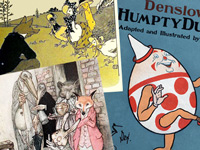
RESOURCES
This article uses material from the Wikipedia article "Nursery rhyme", which is released under the Creative Commons Attribution-Share-Alike License 3.0.
© Stories Preschool. All Rights Reserved.
